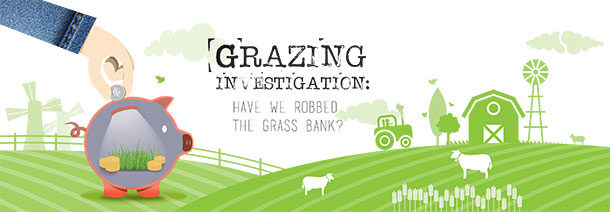To use the grass too low is like robbing the bank – and your own bank account – and then wondering what happened to it next spring.
The long-term sustainability of pastoral societies is linked to the realization of the importance of being a good steward of the resources – with emphasis on being a grassland farmer.
The means of achieving sustainability has been herding a large number of livestock on a small area of land for a short time period, then moving on, similar to some large wild ungulates such as bison, antelope or elk. Some sociologists mistakenly used the term “nomad” and inferred the pastoralists were aimlessly wandering.

A closer examination of the culture shows highly organized social networks (tribes) which extend over large areas and interact with other tribes. A modern extension of pastoral management has been to use intensive management of grazing lands.
Intensive management recognizes that capture of energy by photosynthesis in pasture plants is critical to producing forage and animal products.
Theoretically, forage plants will produce most efficiently when an optimum amount of photosynthetically active radiation (PAR) is intercepted by the plant canopy. At this optimum, the net photosynthesis is greatest.
Net photosynthesis is total photosynthetic products produced (sugars) minus the amount of sugars used for plant respiration. Our recent studies from rotationally grazed pastures of orchardgrass provide some information on how much canopy to retain to efficiently capture light.
We measured PAR on two irrigated pastures with orchardgrass (Dactylis glomerata L.) as the main forage component. Pastures were sampled between April and September over two growing seasons. All pastures were rotationally grazed with beef cow-calf pairs.

The canopy or sward closes in a logarithmic function in irrigated orchardgrass in medium-density stands. To understand the logarithm, it’s helpful to understand that light can be thought of as a stream of particles, photons or quanta. In this case, units can be expressed in moles per square meter per second (mol m–2 s–1). At a 5-inch canopy, 969 μmol m-2 s-1 PAR are intercepted (Figure 1).
At a 10-inch canopy, 1,284 μmol m-2 s-1 PAR are intercepted. So doubling the canopy height from 5 to 10 inches will increase the PAR intercepted by 33 percent.
It is very evident that grazing closer than 4 inches drastically reduces PAR interception in orchardgrass, which means that regrowth energy must come from a higher proportion of stored energy in the crown.
Grazing closer than 4 inches also drastically removes more herbage mass – and thus the stored energy. In contrast, above 10 inches of canopy, the rate increase of PAR interception per inch of canopy height is low, and if measured to flowering, would begin to decline through senescence.
Our results compare similarly to other studies that were grazed to heights of 3 inches, capturing 22 percent of the radiation, while pastures with heights of 9 inches intercepted 78 percent of the radiation.

We did not measure net photosynthesis, but in 1965 researchers in Virginia measured net photosynthesis as a function of stubble height and light intensity (Figure 2). In their laboratory environment, the 4-inch stubble height did not reach a positive net photosynthesis.
This study supports our observations that orchardgrass does not produce well when grazed or cut for hay below 3 inches of stubble height.
Also, orchardgrass will not withstand continuous stocking or grazing, nor persist in horse pastures when repeatedly grazed below 3 to 4 inches of stubble.
It is common to see Kentucky bluegrass or quackgrass dominate a pasture if it is continuously stocked or grazed to below our recommended stubble height of 4 to 5 inches.
Some producers mistakenly think that forage is “wasted” if it is not grazed; however, they are reducing future production by removing too many leaves, which reduces photosynthesis and removes too much of the energy storage of grasses in the lower 3 to 4 inches of stubble. Grasses store energy in the crown above ground, in contrast to alfalfa, which has a large tap root.
Do you doubt that leaving adequate leaves or photosynthetic capacity is important? If you have a solar-powered fence energizer, just put duct tape on about half of the panel and watch the drop in output over time. The results are predictable, and your livestock will catch on quickly.
This study reaffirms the concepts of leaving enough photosynthetic capacity in grazed plants to quickly restore net photosynthesis to optimum. For orchardgrass, we recommend leaving a stubble height of at least 4-5 inches whether grazing or haying. FG
Glenn Shewmaker is an extension forage specialist with the University of Idaho. Laura Hooper is a livestock producer with TLC Angus.
References omitted due to space but are available upon request. Click here to email an editor.








